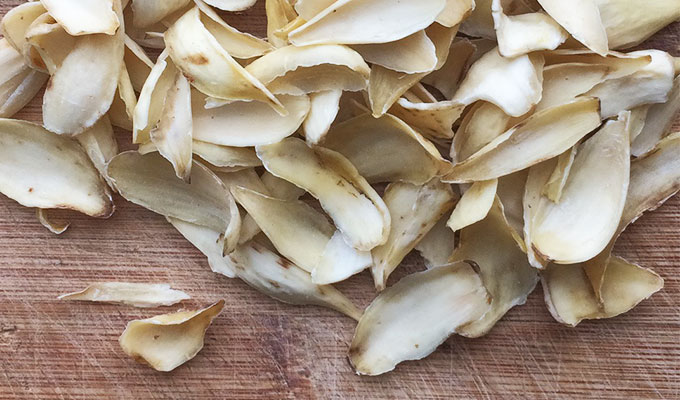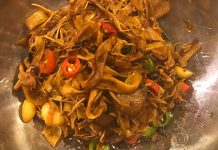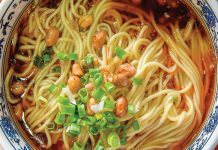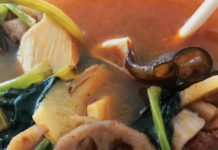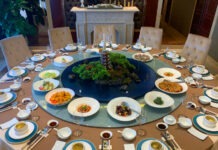The Day Lily (干百合) is beautiful, fragrant, medicinal and edible, an elegant flower that blooms once a day and has for the past 2,000 years, in China at least, been used for medicinal and culinary purposes, as well as its simple beauty.
Now a vegan favourite, popular dishes such as Buddha’s Delight stand side by side modern concoctions including Sweet and Peppery Pumpkin Soup with Dried Lily Petals. Hailed for its many health benefits, this dried ingredient also goes by another moniker, “Golden Needles” (金针菇).
The Day Lily sure packs a health punch, as it comes high in fibre, sodium, carbohydrates, proteins and starch. It contains small amounts of calcium, iron, phosphorus and magnesium, as well as vitamins A, B1, B2 and C.
In addition, thanks to its active glycosides and flavonoids, which stimulate arteries and cause them to dilate, the Day Lily is of major benefit to heart health, minimising myocardium irritability and naturally regulating irregular heart beats.
Moreover, according to Pramod Kerkar, MD, writing for Epainassist, the flower is good for a whole host of ailments, that also include the treating of burns, both topically and in the prevention of scar tissue through the use of ointment; it is used in cases of weak contractions during childbirth, and known to effectively treat tumours and ulcers, conjunctivitis, insomnia and depression.
In addition to being an effective blood cleanser, it can grow eyebrow hair! Finally, this innocent beauty is said to be used as an antidote to arsenic poisoning. Bam! Keep a Day Lily or two in your purse at all times.
Asian beauty and food bloggers on YouTube bang on about its hair, skin and nail strengthening abilities, and thus can be found popularising “healthy” soup recipes that make use of other likewise earthy ingredients, such as wolf berry, date, yam etc. For a more flavoursome take, try some of these stir-fried or sautéed options.
Described as musky, earthy and slightly tart, when cooked, the Lily becomes chestnutty, with the following dishes being the most popular in China today.
- Sauteed Lily Bulbs and Celery (西庆百合)
- Lily Bulb and Lotus Seed Porrige (百合捻子粥)
- White Fungus Pear and Lily Bulb Soup (百合银耳雪梨汤)
- Sauteed Lily Bulb Shrimp (百合虾)
- Buddha’s Delight (罗汉菜)
Interestingly, Buddha’s Delight is said to traditionally be served in monasteries on the first day of the Chinese New Year, and eaten for the 5 days thereafter as a kind of detox.
The Lily bulb is cheap and usually comes dried (with a slightly yellowish tinge). Better select the slightly fresher, whiter ones, not brittle and falling apart; this indicates they’re too old! Lily bulbs have a great shelf life and can last for months when left in a cool dry place.
Cooking the entire fresh bulb is not recommended as dirt can be found amongst the petals. Simply pull the petals off the side of the bulb, rinse and use for cooking. The longer they are kept, the sweeter they will become. When dried, the leaves or petals can then be soaked for 30 minutes in warm water to rehydrate them before being used.
No longer will the Lily sit in your memory bank as just another bunch of aromatic flowers, destined for a short life on your kitchen table. Admire it, smell it, dry it and for Pete’s sake eat it! There is not a better time to do so; with this dry wintery Nanjing weather, a little moisture for the lungs couldn’t hurt.


